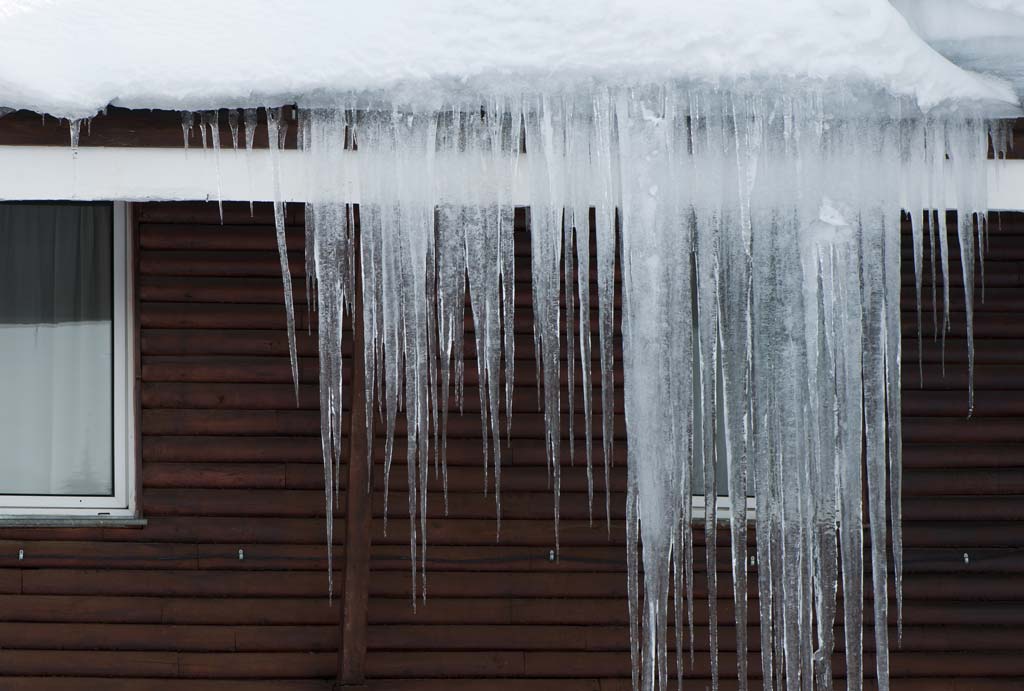As much as people like the colder weather up North and no matter how much fun the snow can be to play in and look at during the winter time, it can cause a wide range of issues for your home, especially the roofing system. When the snow on your house begins to melt, it flows off like rain. However, if the temperatures drop again after the snow starts melting, you face a new problem: ice dams. The formation of ice dams on your roof can cause major damage to the roof and other parts of your home and can lead to extensive and costly repairs in the winter as well as in the spring when the snow and ice all begins to melt. Here at Stay Dry Roofing we have experience with winter roof care and maintenance and can assist you so you know everything you need to know about ice dams this winter.
What Exactly Are Ice Dams?
“There is a complex interaction among the amount of heat loss from a house, snow cover and outside temperatures that leads to ice dam formation. For ice dams to form there must be snow on the roof, and, at the same time, higher portions of the roof’s outside surface must be above 32 degrees F while lower surfaces are below 32. For a portion of the roof to be below 32, outside temperatures must also be below 32. When we say temperatures above or below 32, we are talking about average temperature over sustained periods of time. The snow on a roof surface that is above 32 will melt. As water flows down the roof it reaches the portion of the roof that is below 32 and freezes. Voila! – an ice dam” (University of Minnesota Extension).
The dams form and can quickly grow because it is being steadily fed by the melting snow above it. However, the ice will only form in areas of the roof where the roofing material reaches 32 degrees or colder. When the water hit this area, it will refreeze and form the ice dam and stop the water from flowing any farther off the roof’s edge. So, the water above the dam backs up and stays in a melted liquid state because it is in contact with roofing material that is above freezing. This water finds cracks and openings in the exterior roof covering and flows into the attic space. From the attic, it could flow into exterior walls or through the ceiling insulation and stain the ceiling finish.
This is why it is important to be mindful of ice dams this winter and why you need to be mindful of how well your roofing system is insulated and if any known damage is present before the snow and ice begin to accumulate.
Do Ice Dams Cause Damage to Homes?
Ice dams are a common cause for roof leaks, and if your roof is leaking you could end up with expensive interior damages. Leaks can lead to wet and infective insulation which only worsen the heat and air exchange between your home and the outside air. Water that gets into your home can ruin ceiling and walls and even reach to your floor where it can rot floorboard and ruin carpeting. All of this wet material can cause mold and mildew to form which can not only worsen the decay and staining but it can put you and your family at risk for health issues. Individuals who have allergies or who are sensitive to things like old can become very sick and even be hospitalized because of the mold. Other conditions can be made worse and many people experience sinus infections, chronic coughs, and other problems because of the mold caused by a leaky roofing system. Ice dams can make existing damage worse and can cause even more damage which is why you must be mindful of them and be vigilant during the winter and understand how these ice dams form and lead to damage.
“Heat from the house travels to the roof surface in three ways: conduction, convection, and radiation. Conduction is heat energy traveling through a solid. A good example of this is the heating of a cast iron frying pan. The heat moves from the bottom of the pan to the handle by conduction. If you put your hand above the frying pan, heat will reach it by the other two methods. The air right above the frying pan is heated and rises. The rising air carries heat/energy to your hand. This is heat transfer by convection…In a house, heat moves through the ceiling and insulation by conduction through the slanted portion of the ceiling. In many homes, there is little space in regions like this for insulation, so it is important to use insulations with high R-value per inch to reduce heat loss by conduction” (University of Minnesota Extension). R-value is how well the material will insulate so three inches of insulation with a 25 R-value is better than three inches of insulation with a 15 R-value. A local roofing expert, like our team here at Stay Dry Roofing, can assist you with finding the best insulation for your attic and roof so you can prepare for the coming snow and ice and so you can work to prevent ice dams this winter.
Can Ice Dams be Prevented?
The best strategy for preventing ice dams is to keep your roof cold. First, make sure you have the right kind of insulation installed, using R-38 at the very least. Next, it is important to inspect your roofing system inside and out at least once a year but two or more times a year is ideal. This will ensure you are noting any and all changes and can detect problems and damages when they are minor. Dealing with them before they have the chance to get out of hand is critical! You also should do routine checks of your roof to look for leaks where air can move between your home and the outside. These are known as energy leaks and are a prime place for roof damage to occur, especially if you do get ice dams forming. Your best bet is to work with a roofing professional to come in and test your home for energy leaks, particularly up to the roof, after which they can recommend the best course of action.
If your home is due for some remodeling or repairs involving the roof or siding, take the opportunity to find and seal air leaks and upgrade your insulation. You may also want to consider a new roof or a major upgrade to ensure your roofing system is ready for the winter cold ahead. Preventing ice dams from forming will save you money overall, by increasing the lifespan of your roof, keeping your roof in good condition, maintaining the integrity of your home’s structure, and keeping insulation in peak working condition. For a professional inspection or for emergency help in the event of an ice dam, contact Stay Dry Roofing today and let us help you with the best local expert roofing care available. Call now to get started and protect your home from ice dams this winter!


